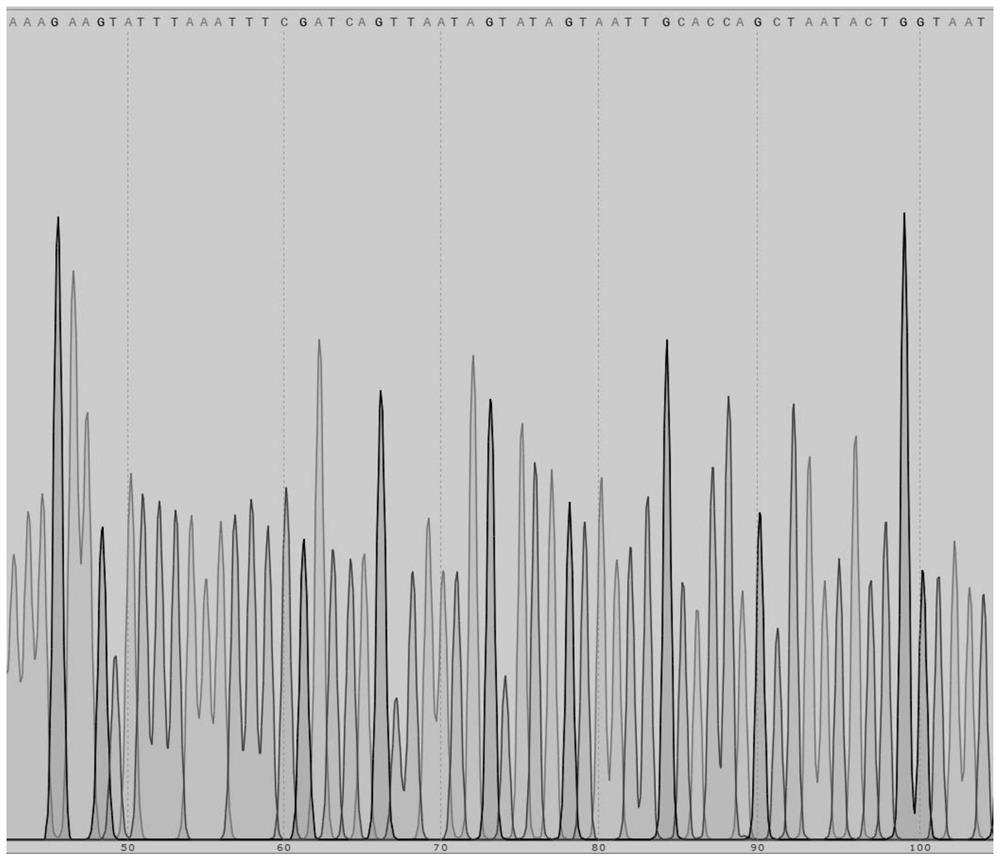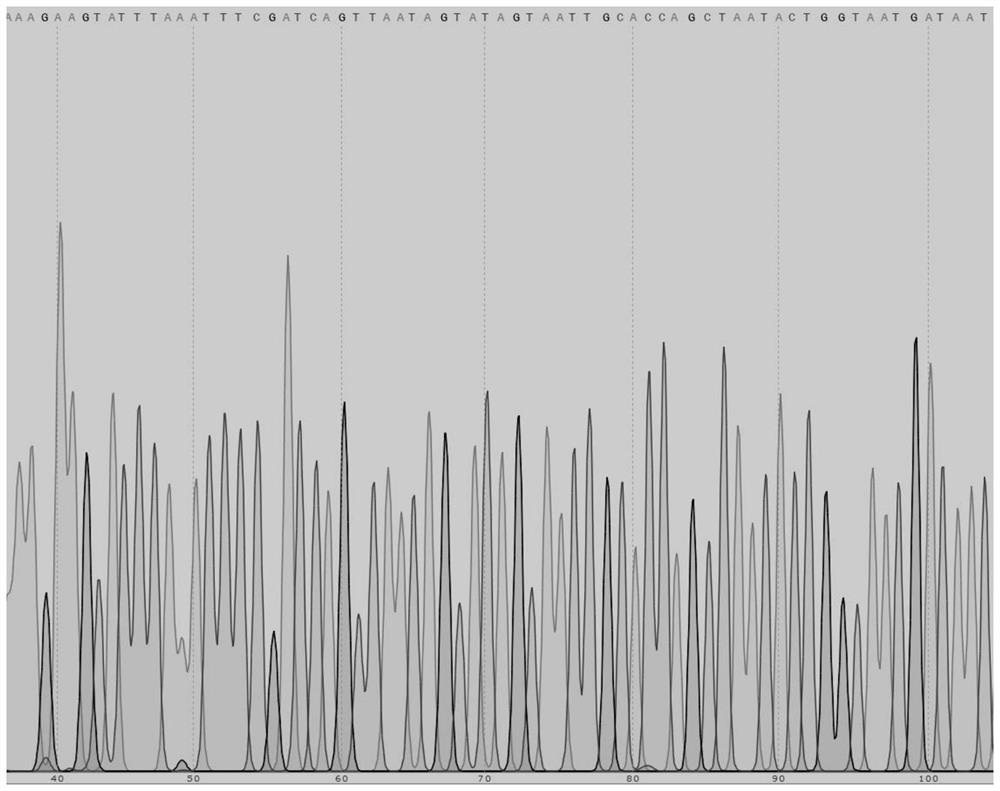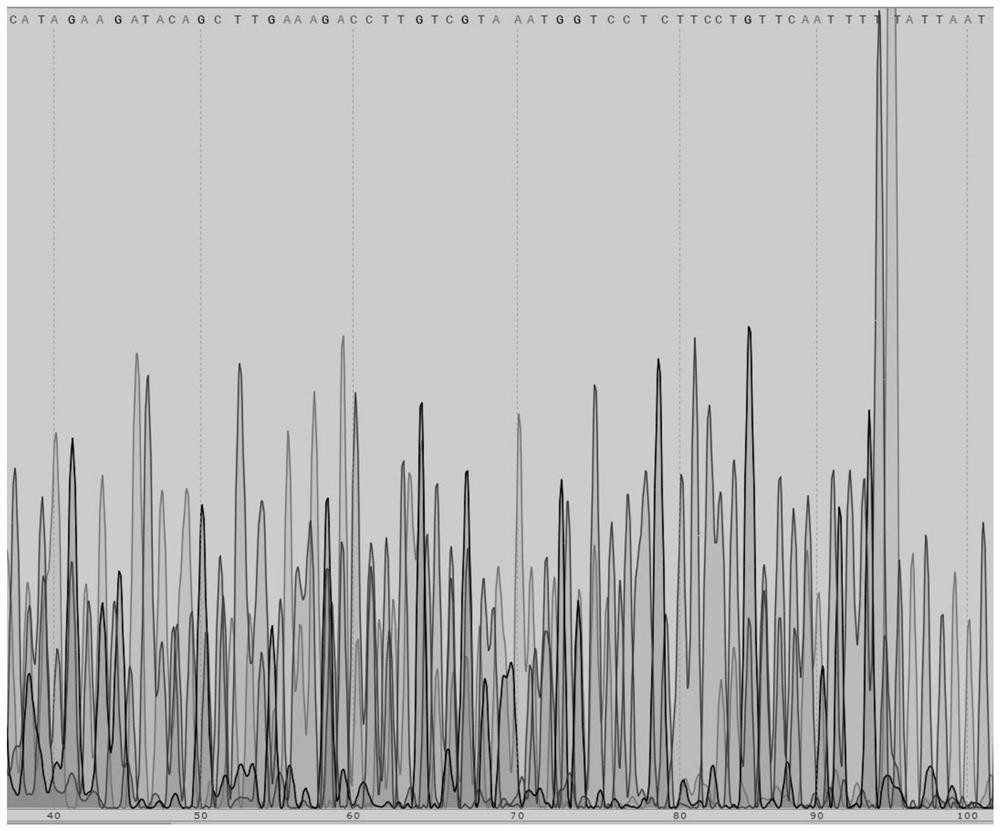Application of COI gene in identification of luehdorfia chinensis
A Chinese tiger swallowtail and gene technology, applied in the fields of application, genetic engineering, plant gene improvement, etc., can solve the problems of being easily affected by the environment, poor accuracy, etc., and achieve the effect of shortening the identification time and accurate identification
- Summary
- Abstract
- Description
- Claims
- Application Information
AI Technical Summary
Problems solved by technology
Method used
Image
Examples
Embodiment 1
[0072] Example 1 Design and Verification of Specific Primers for the COI Gene Fragment of Tiger Papilio chinensis
[0073] Sequencing quality analysis: The present invention designs 3 pairs of primers for the Chinese tiger swallowtail, and analyzes the sequencing quality and screens the available primer sequences through the following steps:
[0074] 1) Test sample:
[0075] The sample S1 (Luehdorfia chinensis 1) in the present invention was taken from Nanjing Animal Protection Association, Jiangsu Province in mid-April 2019. It is a living adult sample. Result accuracy.
[0076] 2) Use the following primers to amplify the target COI gene fragment of S. chinensis S1, wherein the PCR amplification primer pair (primer pair COI1, primer pair COI2, primer pair COI3) and PCR reaction system and program are as follows, primer The sequence is (F represents the upstream primer, R represents the downstream primer):
[0077] COI 1-F: (SEQ ID NO: 1);
[0078] COI 1-R: (SEQ ID NO:...
Embodiment 2
[0086] Example 2 Primer pair COI1 amplified gene barcode applicability analysis of the COI gene fragment of the Chinese tiger swallowtail butterfly
[0087] 1) Test sample: See Example 1) for the source of the Chinese tiger swallowtail sample S1 of the present invention.
[0088] 2) Sequence information:
[0089] Log in to the National Center for Biotechnology Information (NCBI, https: / / www.ncbi.nlm.nih.gov / ), download the existing COI sequences of Papilio species, and download the COI sequences of some outgroups, as follows Show:
[0090] Table 1 COI sequences downloaded from GenBank
[0091]
[0092] 3) Method:
[0093] (3.1) Use the DNeasy Blood&Tissue Kit (Qingke) kit to extract leg muscle DNA from the sample, and dilute it into a 50ng / μL working solution for later use. The extracted DNA sample should be stored at -20°C.
[0094] (3.2) Use the following primers to amplify the COI gene fragment of the order S. sinensis, wherein the PCR amplification primers and PCR r...
Embodiment 3
[0120] Example 3 Application of Primer to COI1 Amplified COI Gene Barcode of Tiger Papilio chinensis
[0121] S2 (Luehdorfia chinensis 2) and S3 (Luehdorfia chinensis 3) were identified by primer COI1. The sources of S. chinensis individual S2 and S3 are the same as that of S. chinensis S1 in embodiment 1-1). The gene sequence homology between the sequencing result and SEQ ID NO.3 is more than 98% (the gene sequence homology between S2 and SEQ ID NO.3 in the present invention is 99.69%, and S3 and SEQ ID NO.3 The homology of the gene sequence is 100%), so it can be determined that the tissue to be tested is the Chinese tiger swallowtail. The amplified sequences and genetic distances were calculated as follows. The average genetic distance between species was 0.0839, the average genetic distance within a species was 0.0030, and the average genetic distance between species was 28 times of the average genetic distance within a species. The minimum interspecific genetic distanc...
PUM
 Login to View More
Login to View More Abstract
Description
Claims
Application Information
 Login to View More
Login to View More - R&D
- Intellectual Property
- Life Sciences
- Materials
- Tech Scout
- Unparalleled Data Quality
- Higher Quality Content
- 60% Fewer Hallucinations
Browse by: Latest US Patents, China's latest patents, Technical Efficacy Thesaurus, Application Domain, Technology Topic, Popular Technical Reports.
© 2025 PatSnap. All rights reserved.Legal|Privacy policy|Modern Slavery Act Transparency Statement|Sitemap|About US| Contact US: help@patsnap.com



